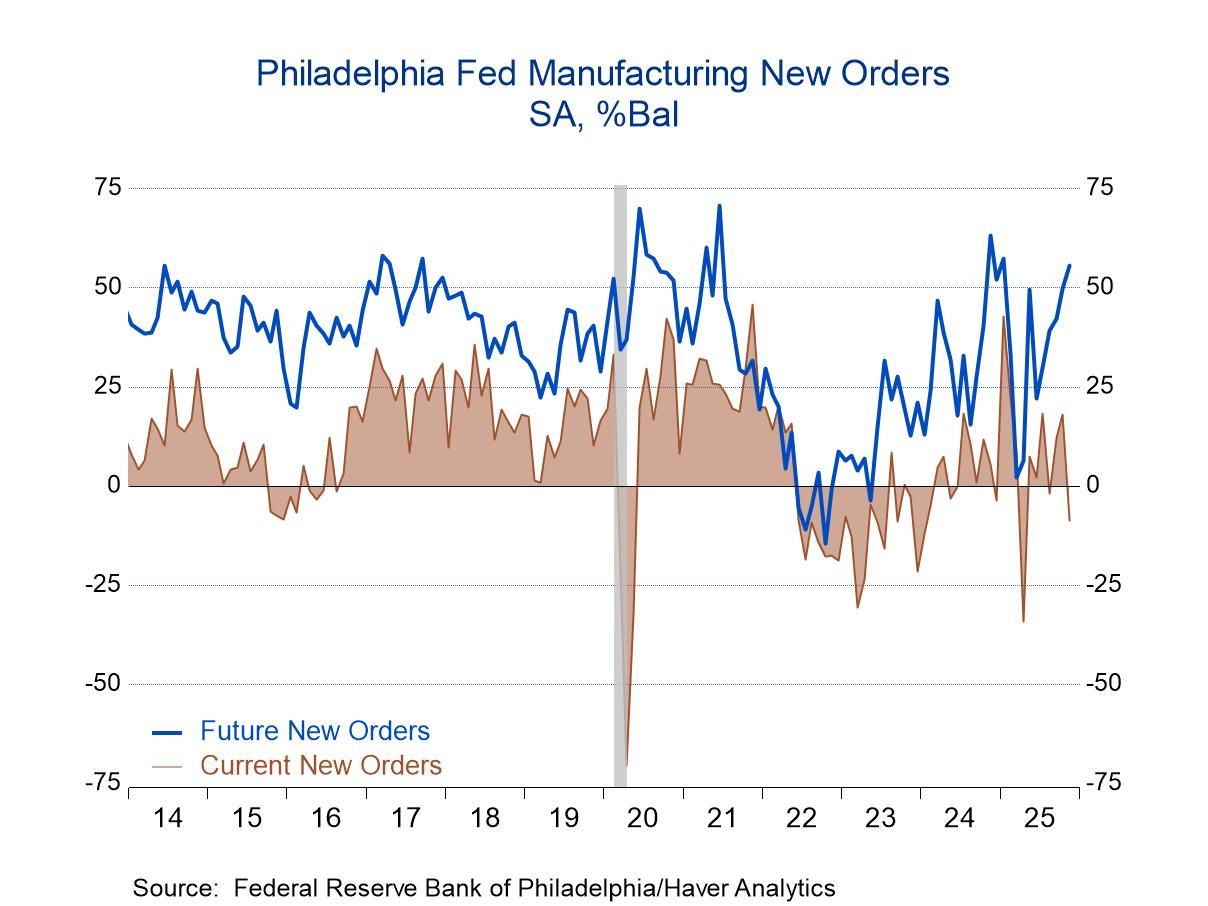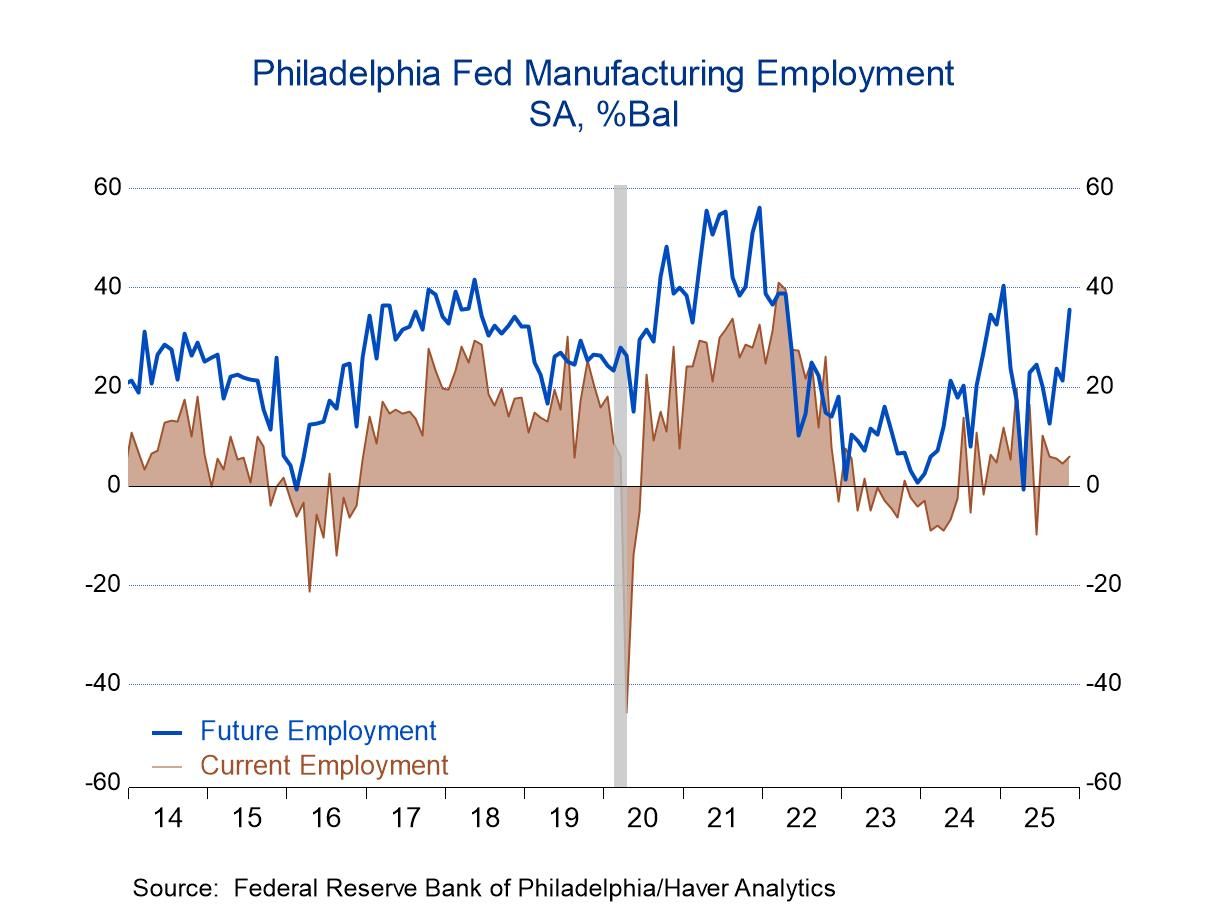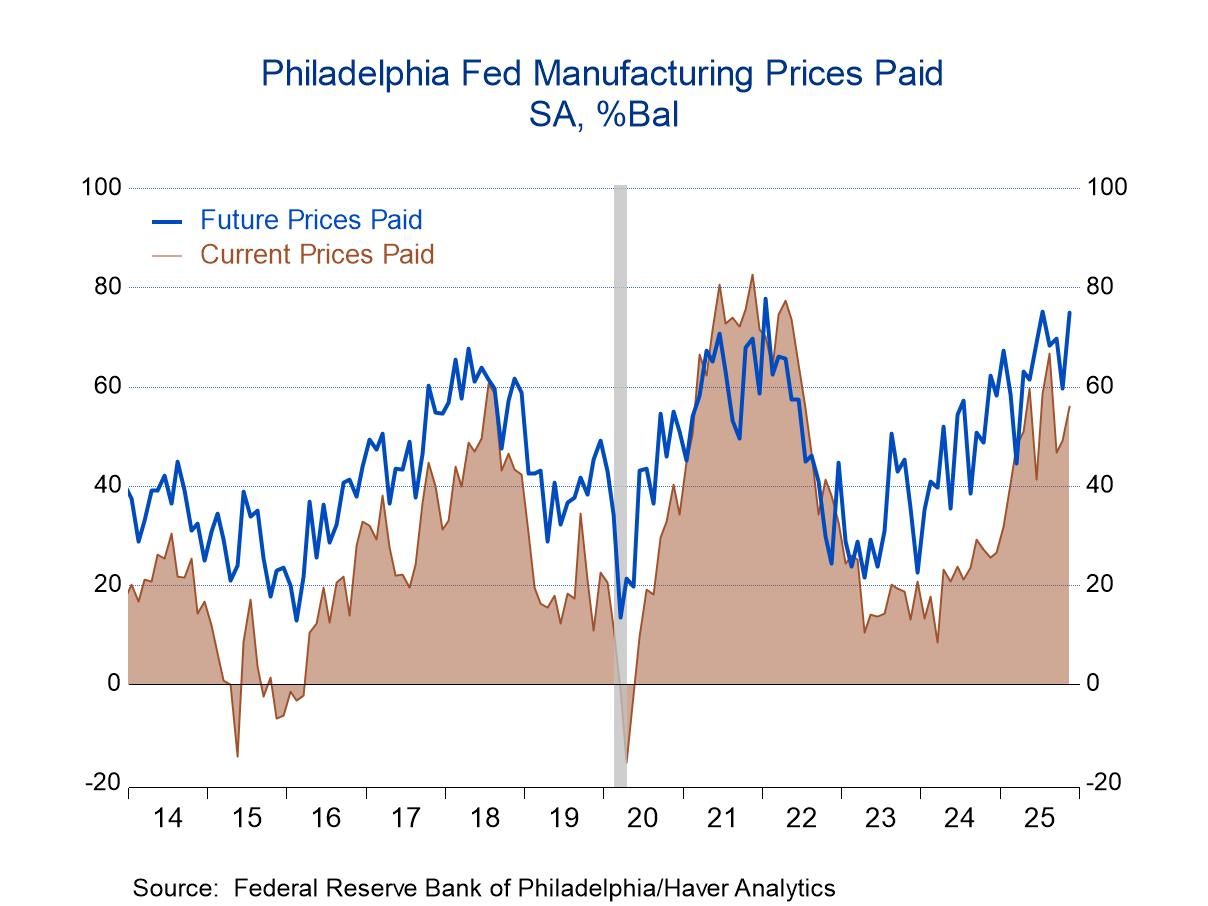Philly Fed Manufacturing Activity Continued to Decline in November
by:Sandy Batten
|in:Economy in Brief
Summary
- The headline index increased to -1.7 in November from -12.8 in October. So, while activity fell further, the pace of decline slowed.
- Both new orders and shipments fell into negative territory in November after posting positive readings in October.
- Delivery times slowed and the pace of input price increases rose.
- Employment increased while the rise in the workweek slowed.


The Current Activity Diffusion Index from the latest Manufacturing Business Outlook Survey (MBOS) conducted by the Federal Reserve Bank of Philadelphia rose to -1.7 in November from -12.8 in October. The survey covers the third Federal Reserve District. A reading of -1.0 for November had been expected in the Action Economics Forecast Survey. There was a clear dichotomy across respondents. Twenty-nine percent reported an increase in activity in November, up from 12.4% in October. However, 31% reported a decrease in activity, up from 25% in October. Responses to this month's survey were collected from November 10 to November 17.
The headline index is the answer to just one question: whether activity increased, decreased or was unchanged. Haver Analytics calculates an ISM-adjusted current activity diffusion index from the five key components using the methodology employed to construct the national ISM index. This figure fell to 48.3 in November from 53.5 in October, below the critical 50 level that separates contraction from expansion for the first time in three months and indicating that the component indexes were actually a little weaker than the headline index.
For the component indexes, the shipments index fell to -8.7 in November, its first negative reading since May, from 6.0 in October. The percentage of respondents reporting an increase in shipments fell to 21.5% from 24.1% while the percentage reporting a decrease jumped to 30.2% from 18.1%. The new orders index also fell markedly to -8.6 in November from 18.2 in October. The percentage of respondents reporting an increase in orders fell to 25.6% from 34.5% while the percentage reporting a decrease surged to 34.2% from 16.2%. Delivery times shortened as that index fell to -4.3 in November from 6.6 in October.
Respondents continued to report overall increases in employment, and the employment index ticked up to 6.0 from 4.6. Most firms continued to report no change in employment levels (74.8%, down from 80.9% in October), while the share of firms reporting increases (15.6%) exceeded the share reporting decreases (9.6%). The average workweek index fell from 12.8 in October to 3.7 in November.
The prices paid index remained elevated and increased nearly 7 points to 56.1, its highest reading in three months. Most firms (58.6%) reported increases in prices paid, only 2.5% of respondents reported decreases, and 38.7% reported no change. The current prices received index fell 9 points to 17.7, more than offsetting last month’s increase. While this was its lowest reading since last December, it remained above its long-run average.
The diffusion index for future general activity increased to 49.6 in November, its highest reading in a year, from 36.2 in October. The future new orders index rose to 55.6, its highest reading since January, and the future shipments index was unchanged at 48.4. Both future price indexes remained elevated and moved higher. The future capital expenditures index edged up 2 points to 26.7.
The Manufacturing Business Outlook Survey (MBOS), conducted by the Federal Reserve Bank of Philadelphia, is a monthly survey of manufacturers in the Third Federal Reserve District. Participants indicate the direction of change in overall business activity and in the various measures of activity at their plants. The diffusion indexes in the MBOS represent the percentage of respondents indicating an increase minus the percentage indicating a decrease. The series from the survey dating back to May 1968 can be found in Haver's SURVEYS database. The expectations forecast figures are from the Action Economics Forecast Survey in AS1REPNA.


Sandy Batten
AuthorMore in Author Profile »Sandy Batten has more than 30 years of experience analyzing industrial economies and financial markets and a wide range of experience across the financial services sector, government, and academia. Before joining Haver Analytics, Sandy was a Vice President and Senior Economist at Citibank; Senior Credit Market Analyst at CDC Investment Management, Managing Director at Bear Stearns, and Executive Director at JPMorgan. In 2008, Sandy was named the most accurate US forecaster by the National Association for Business Economics. He is a member of the New York Forecasters Club, NABE, and the American Economic Association. Prior to his time in the financial services sector, Sandy was a Research Officer at the Federal Reserve Bank of St. Louis, Senior Staff Economist on the President’s Council of Economic Advisors, Deputy Assistant Secretary for Economic Policy at the US Treasury, and Economist at the International Monetary Fund. Sandy has taught economics at St. Louis University, Denison University, and Muskingun College. He has published numerous peer-reviewed articles in a wide range of academic publications. He has a B.A. in economics from the University of Richmond and a M.A. and Ph.D. in economics from The Ohio State University.




 Global
Global

